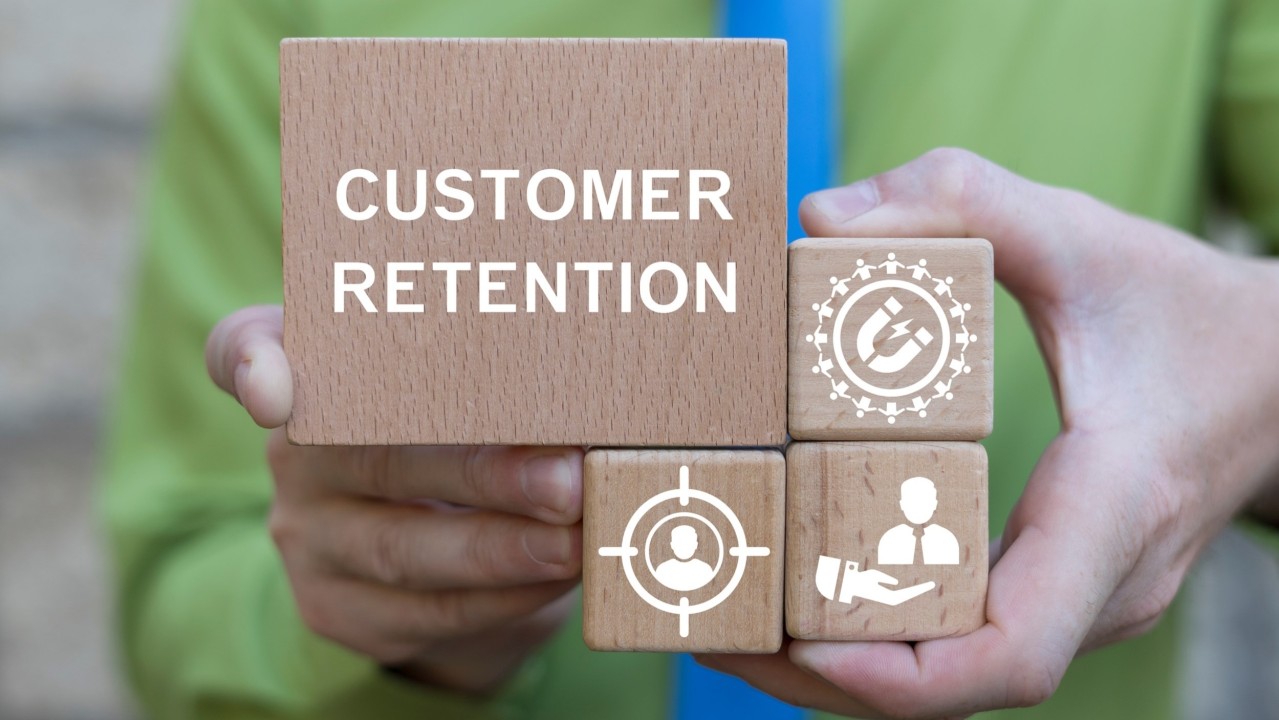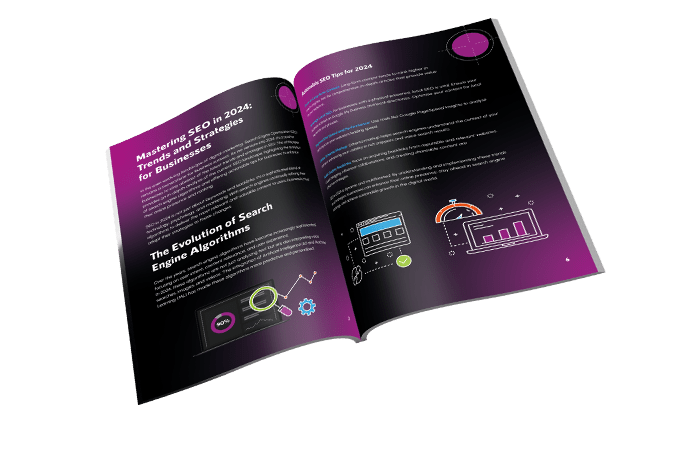News
The Top UK 50 Digital Marketing Trends Everyone Should Know & Understand
In today’s fast-paced digital world, keeping up with the latest trends in digital marketing is essential for businesses that want to stay competitive and connect with their target audience. Digital marketing trends are constantly evolving, driven by changes in technology, consumer behavior, and market conditions.
By staying up to date on these trends, businesses can identify new opportunities, improve their marketing strategies, and reach their audience more effectively. Whether it’s through personalized content, influencer marketing, or new technologies like AI and VR, understanding the latest digital marketing trends is crucial for businesses that want to succeed in the digital marketplace.
Throughout this article, various aspects of digital marketing are discussed, from social media and content marketing to search engine optimization (SEO) and artificial intelligence (AI). The article highlights how the UK’s unique digital landscape has given rise to distinct trends and practices, making it essential for marketers and business owners to adapt and stay ahead of the curve.
Here’s the top 50 UK digital marketing trends you should know and understand:
Personalization and Hyper-targeting:
Personalization and hyper-targeting are important trends in digital marketing that help brands deliver more relevant content and offers to their target audiences. By analyzing user data and behavior, brands can create personalized experiences that drive engagement and conversions. Use cases include personalized emails, recommendations, and landing pages.
The Rise of Influencer Marketing:
Influencer marketing involves partnering with social media influencers to promote a brand or product to their followers. It’s an effective way to build brand awareness and drive sales, especially in industries such as fashion and beauty. Use cases include sponsored social media posts and influencer-hosted events.
Voice Search Optimization:
With the rise of voice assistants such as Amazon’s Alexa and Google Assistant, optimizing for voice search has become important for businesses. Use cases include creating content that answers common voice search queries and optimizing websites for voice search.
Interactive Content:
Interactive content such as quizzes, polls, and surveys can help engage users and improve brand awareness. Use cases include interactive infographics, quizzes, and surveys.
Video Marketing:
Video marketing involves creating videos to promote a brand or product. It’s a highly effective way to engage audiences and drive conversions. Use cases include product demos, customer testimonials, and brand videos.
Chatbots and AI Assistants:
Chatbots and AI assistants can help businesses automate customer support and improve user engagement. Use cases include chatbots for customer support and AI assistants for personalized recommendations.
Social Commerce:
Social commerce involves using social media platforms to sell products directly to consumers. It’s an effective way to increase sales and reach a wider audience. Use cases include shoppable posts on Instagram and Facebook.
Live Streaming:
Live streaming involves broadcasting real-time videos to engage audiences and build brand awareness. Use cases include live events, webinars, and product launches.
Social Messaging Apps:
Social messaging apps such as WhatsApp and Facebook Messenger are popular communication channels that can be used for customer support and engagement. Use cases include chatbots for customer support and personalized messaging campaigns.
User-Generated Content:
User-generated content such as customer reviews and social media posts can help build brand trust and improve engagement. Use cases include social media campaigns that encourage users to share their experiences with a brand or product.
Augmented Reality and Virtual Reality:
Augmented reality and virtual reality technologies can help businesses create immersive experiences that engage users and improve brand awareness. Use cases include AR and VR-powered product demos and virtual tours.
Micro-Moments:
Micro-moments are small moments of intent or decision-making that occur throughout a customer’s journey. By understanding these micro-moments, businesses can create more targeted and effective marketing campaigns. Use cases include personalized ads and recommendations based on user behavior.
Integrated Omnichannel Marketing:
Integrated omnichannel marketing involves creating a seamless experience across multiple channels and touchpoints. It’s an effective way to improve user engagement and drive conversions. Use cases include personalized email campaigns and cross-channel promotions.
Personal Data Privacy and Security:
Personal data privacy and security have become increasingly important to consumers. Businesses that prioritize data privacy and security can build trust with customers and improve brand reputation. Use cases include GDPR compliance and data protection measures.
Progressive Web Apps:
Progressive web apps are mobile apps that can be accessed through a web browser. They offer a seamless and fast user experience and can improve engagement and conversions. Use cases include mobile apps for e-commerce and customer support.
Mobile-First Indexing:
With the rise of mobile devices, Google has started to prioritize mobile-first indexing. This means that websites that are optimized for mobile devices will rank higher in search results. Use cases include mobile-friendly website design, responsive design, and mobile app optimization.
Artificial Intelligence and Machine Learning:
Artificial intelligence (AI) and machine learning (ML) can help businesses automate tasks and improve user experiences. Use cases include chatbots, personalized recommendations, and predictive analytics.
Visual Search:
Visual search allows users to search for products using images rather than keywords. It’s a powerful tool for e-commerce businesses and can improve user engagement and conversions. Use cases include visual search engines and augmented reality-powered visual search.
360° Video:
360° video allows users to explore a virtual environment from different angles. It’s a powerful tool for creating immersive experiences and can be used in industries such as travel and real estate. Use cases include 360° video tours and virtual events.
Shoppable Posts:
Shoppable posts allow users to purchase products directly from social media platforms such as Instagram and Facebook. They can help businesses increase sales and improve user engagement. Use cases include shoppable Instagram posts and Facebook marketplace.
Interactive Emails:
Interactive emails allow users to interact with content directly within an email. They can improve engagement and drive conversions. Use cases include interactive newsletters and personalized offers.
Gamification:
Gamification involves adding game-like elements to non-gaming experiences to increase engagement and motivation. Use cases include loyalty programs and educational content.
Storytelling:
Storytelling involves using narrative techniques to create a compelling brand message. It’s an effective way to build brand awareness and improve user engagement. Use cases include brand storytelling and user-generated content campaigns.
Behavioral Marketing:
Behavioral marketing involves analyzing user behavior to create more targeted and effective marketing campaigns. Use cases include personalized recommendations and retargeting campaigns.
Brand Activism:
Brand activism involves taking a stance on social and political issues. It’s an effective way to build brand loyalty and improve brand reputation. Use cases include cause-related marketing campaigns and social responsibility initiatives.
Influencer-Generated Content:
Influencer-generated content involves partnering with influencers to create content that promotes a brand or product. It can help businesses increase brand awareness and drive sales. Use cases include sponsored social media posts and influencer-hosted events.
Personalized Email Marketing:
Personalized email marketing involves creating targeted email campaigns based on user behavior and preferences. It can help businesses improve engagement and drive conversions. Use cases include personalized email newsletters and abandoned cart reminders.
Micro-Influencers:
Micro-influencers are social media influencers with smaller followings who can be more effective at driving engagement and conversions. Use cases include micro-influencer campaigns and sponsored content.
Immersive Technologies:
Immersive technologies such as virtual reality and augmented reality can create immersive brand experiences that engage users and improve brand awareness. Use cases include AR-powered product demos and virtual reality-powered events.
Dynamic Ads:
Dynamic ads allow businesses to create ads that change based on user behavior and preferences. They can improve engagement and drive conversions. Use cases include personalized retargeting campaigns and product recommendations.
Geofencing and Geotargeting:
Geofencing and geotargeting allow businesses to target users based on their location. They can be used to create targeted marketing campaigns and improve user engagement. Use cases include location-based offers and mobile app promotions.
Data-Driven Marketing:
Data-driven marketing involves using data analysis to create more targeted and effective marketing campaigns. Use cases include predictive analytics and customer segmentation.
Programmatic Advertising:
Programmatic advertising involves using AI and machine learning to automate ad buying and optimize campaigns. It can improve efficiency and drive better results. Use cases include programmatic display advertising and real-time bidding.
Video Storytelling:
Video storytelling involves using video content to tell a compelling brand story. It can improve user engagement and build brand awareness. Use cases include brand videos and customer testimonials.
Native Advertising:
Native advertising involves creating ads that blend seamlessly with their surrounding content. It can improve user engagement and drive conversions. Use cases include sponsored content and promoted posts.
Contextual Advertising:
Contextual advertising involves placing ads in relevant contexts based on user behavior and preferences. It can improve engagement and drive conversions. Use cases include contextual targeting and content-based advertising.
Live-Action 3D:
Live-action 3D involves using 3D modeling and animation to create immersive experiences that engage users and improve brand awareness. Use cases include virtual events and product demos.
Personalized Chatbots:
Personalized chatbots use AI and machine learning to provide personalized support and recommendations to users. They can improve engagement and reduce support costs. Use cases include chatbots for customer support and personalized shopping assistants.
Virtual Event Platforms:
Virtual event platforms allow businesses to host virtual events such as conferences and trade shows. They can improve accessibility and reduce costs. Use cases include virtual conferences and product launches.
Location-Based Marketing:
Location-based marketing involves using user location data to create targeted marketing campaigns. It can improve engagement and drive conversions. Use cases include location-based offers and mobile app promotions.
Short-Form Video:
Short-form video involves creating brief video content that is easily consumed on mobile devices. It can improve user engagement and build brand awareness. Use cases include social media stories and short-form video ads.
Local SEO:
Local SEO involves optimizing websites and content for local search results. It can improve visibility and drive local traffic. Use cases include local business listings and location-specific content.
Email Marketing Automation:
Email marketing automation involves using software to automate email campaigns based on user behavior and preferences. It can improve efficiency and drive conversions. Use cases include drip campaigns and welcome series.
Social Media Ads:
Social media ads allow businesses to reach their target audience on social media platforms. They can improve visibility and drive conversions. Use cases include sponsored posts and social media retargeting.
Retargeting and Remarketing:
Retargeting and remarketing involve targeting users who have interacted with a brand or product in the past. They can improve engagement and drive conversions. Use cases include retargeting ads and abandoned cart reminders.
Authenticity and Transparency:
Authenticity and transparency are important values for modern consumers. Businesses that prioritize authenticity and transparency can build trust with their audience and improve brand reputation. Use cases include honest and transparent communication with customers and socially responsible initiatives.
Influencer-Driven Products:
Influencer-driven products involve partnering with influencers to create products that are aligned with their personal brand. They can improve brand awareness and drive sales. Use cases include influencer-designed products and co-branded products.
Personalized Landing Pages:
Personalized landing pages allow businesses to create targeted landing pages based on user behavior and preferences. They can improve engagement and drive conversions. Use cases include personalized product pages and location-specific landing pages.
Social Listening:
Social listening involves monitoring social media platforms for brand mentions and user feedback. It can help businesses improve customer service and respond to user needs. Use cases include social media monitoring and sentiment analysis.
Agile Marketing:
Agile marketing involves using an iterative and data-driven approach to marketing. It can improve efficiency and drive better results. Use cases include A/B testing and rapid experimentation.
This article provides valuable insights into the ever-evolving world of digital marketing in the United Kingdom. By understanding these trends, businesses and marketers can better adapt their strategies to suit the changing digital landscape and remain competitive in today’s fast-paced world.
By embracing new technologies and methodologies, marketers can create more engaging and targeted campaigns, ultimately enhancing customer experience and driving business growth.
This comprehensive guide serves as a roadmap for those looking to stay ahead in the dynamic world of digital marketing, offering an invaluable resource for both industry veterans and newcomers alike.





The Ultimate Social Media Guide
With the ever-growing power of social media, we use the latest techniques, video, and animation software to craft eye-catching social media assets that make your brand pop. Our designers, wielding Adobe Creative tools, create distinctive animations and graphics to illuminate your brand story and highlight your products or services. Want a unique design? No problem – we also offer bespoke designs to match your brand aesthetic.